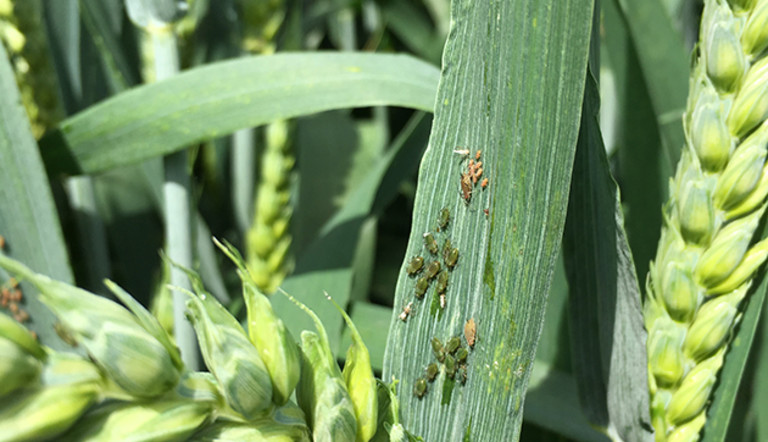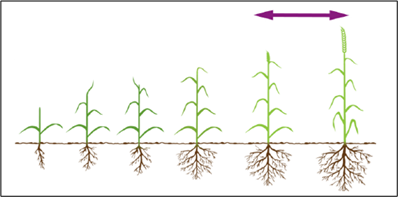
MAVRIK: the safer way to control grain aphids

In addition to carrying out regular crop inspections to determine if and when aphid migrations have landed in your crops, and to assess when pest thresholds have been reached, an up to date assessment of the level is also available via the Rothamsted insect survey: at https://www.rothamsted.ac.uk/national-capability/the-insect-survey.
Grain aphids
As soon as grain aphids have been detected on at least 50% of the crop’s tillers before start of flowering (or two thirds of tillers infested and increasing from start of flowering up to watery ripe stage), growers should apply a suitable pesticide, and preferably one with a lower impact on beneficial insects such as ground and rove beetles, hoverflies, lacewings, ladybirds and parasitic wasps and flies, all of which feed on and can therefore help to control pest populations.
In situations where a pyrethroid pesticide is deemed necessary, MAVRIK® (240 g/litre tau-fluvalinate) not only provides fast-acting contact control of grain aphids, but has also been proven to have a lower residual impact on beneficial insects compared to other pyrethroids.
Cabbage aphids
MAVRIK® also works well against mealy cabbage aphids but should be applied early as colonies start to build (apply at 0.2L/ha) so that beneficial insects can migrate into the crop to limit any subsequent reinfestations.
Winged cabbage aphids typically land in brassica crops from May onwards, with each generation of cabbage aphids takes 7-10 days to develop. Colonies can quickly establish, with aphids secrete a wax which makes late-stage infestation less vulnerable to contact insecticides. As the colony grows, the plant becomes weakened and growth is distorted. Infestation on flowers and seed pods will result in significant yield losses, and aphids can also transmit viruses such as Turnip Mosaic Virus (TuMV) and Cauliflower Mosaic Virus (CaMV).
MAVRIK® can be used to control cabbage aphid up until petal fall at BBCH69: in winter oilseed rape apply as soon as more than 13% of plants have been infested. In spring oilseed rape apply as soon as more than 4% of crops have been infested.

Compared to other pyrethroid pesticides, MAVRIK® has a less detrimental effect on beneficial insects after a few days.

IOBC classification: 1 = harmless, 2 = slightly toxic, 3 = moderately toxic, 4 = harmful.
Source: IPM IMPACT. Dose rate: 0.2l/ha
This reduced toxicity enables advantageous insects to recover more quickly after crops have been sprayed, therefore ensuring there’s a strong population of natural predators ready and able to contribute to the control of any subsequent influxes of aphids.

* For summer aphid control in cereal crops, spray once when aphids are present on two-thirds of ears and increasing in numbers.
Better protection when the mercury rises
MAVRIK® has the added advantage of being very fast acting which means it halts feeding damage quickly. It also remains more stable at high temperatures compared to alternative insecticides, with work carried out at BTL Bio-Test Labor Gmbh Sagerheide in Germany showing that temperatures above 15oC reduced the efficacy of lambda cyhalothrin CS formulation against grain aphids. Meanwhile, aphid knockdown and the persistence of MAVRIK® continued to be robust at 20 and 25oC, which makes it the more effective option if and when the mercury finally starts to rise.

Controlled temperature work found MAVRIK® (green lines) to be more effective against grain aphids compared to lambda cyhalothin (red lines) at all temperatures from 15oC upwards.
Source: T.Thieme, 2017 (BTL Bio-Test Labor Gmbh Sagerheide, Germany)

MAVRIK (240 g/litre tau-fluvalinate) is a highly active and novel pyrethroid which has less impact on beneficial organisms such as honeybees compared to other pyrethroid insecticides. It provides effective, fast-acting contact control of aphids, pollen beetle and cabbage seed weevil.